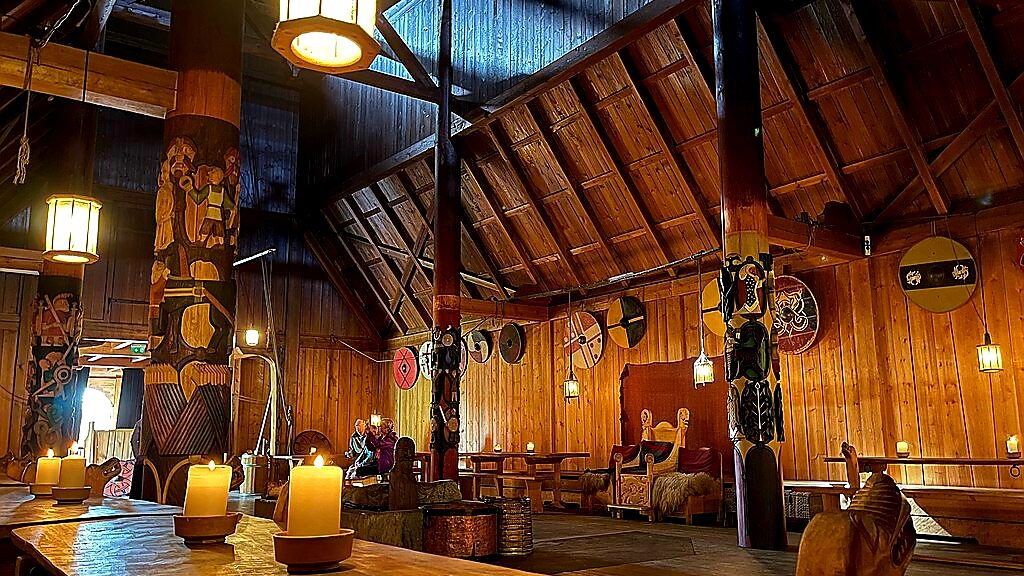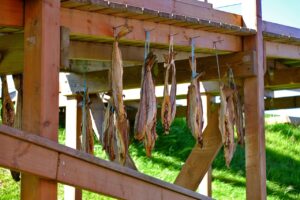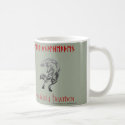
The Viking Month of Þorri
The Viking month of Þorri, also known as Thorri, is a traditional Icelandic winter festival that is celebrated in January and February. This festival has been observed by the Icelandic people for over a thousand years and is a significant part of their cultural heritage. In this blog post, we will explore the history and significance of Þorri and its importance in modern-day Iceland.
Origins of Þorri
The origins of Þorri date back to the Viking Age, when Iceland was settled by Norse explorers. According to Norse mythology, Þorri was the god of winter and the hunt. He was revered by the Vikings for his strength and resilience during the harsh winter months. In honor of Þorri, the Vikings would hold a festival in the middle of winter to celebrate the end of the darkest period of the year and the beginning of the lengthening days.
In Norse mythology, Þorri is a personification of the winter season and the god of frost and cold. He was often depicted as an old man with a long white beard and wearing a fur cloak.
According to the Prose Edda, a medieval Icelandic text on Norse mythology, Þorri is the son of Fornjót, a giant who ruled over the northern regions of Scandinavia. Þorri is said to rule over the month of Þorri, which falls between mid-January and mid-February in the Icelandic calendar.
Þorri is also associated with the hunt, and it was believed that he would bring about the end of the darkest period of the year and the return of the lengthening days. He is often invoked during the winter months to help ensure a successful hunt and a bountiful harvest.
While Þorri is not as well-known as some of the other Norse gods such as Thor or Odin, he was an important figure in Norse mythology and played a significant role in the cultural and religious practices of the Viking Age.
Celebration of Þorri in Iceland

The modern-day celebration of Þorri in Iceland is a continuation of this ancient tradition. It is a time for people to come together and enjoy traditional Icelandic food and drink, including fermented shark (hákarl), sour ram testicles (súrsaðir hrútspungar), and smoked lamb (hangikjöt). These foods were traditionally preserved during the winter months and served as a vital source of nutrition for the Icelandic people during the long, cold winter.
In addition to the food, Þorri is also a time for music, dancing, and storytelling. Many Icelandic folk songs and stories have been passed down through generations and are still performed during the festival. The traditional Icelandic instrument, the langspil, is also often played during Þorri celebrations.

While Þorri is deeply rooted in Icelandic tradition, it has evolved over time to reflect modern-day Iceland. Today, many Þorri celebrations include elements of contemporary Icelandic culture, such as art exhibitions and concerts. The festival also provides an opportunity for Icelanders to connect with their heritage and celebrate their unique identity as a people.
Þorri — A Controversy?
Despite its cultural significance, Þorri is not without controversy. Some Icelanders believe that the traditional foods served during the festival are outdated and unappetizing, and have called for a reimagining of the festival to include more modern cuisine. Others argue that the preservation of traditional foods is vital to the preservation of Icelandic culture and should not be abandoned.
A Popular Festival in Iceland
In recent years, Þorri has also become a popular tourist attraction, drawing visitors from around the world to experience traditional Icelandic culture firsthand. Many tour companies now offer Þorri-themed excursions, where visitors can sample traditional Icelandic foods and participate in Þorri celebrations with locals.
In conclusion, Þorri is a significant part of Icelandic culture and history. This ancient winter festival has evolved over time to reflect modern-day Iceland, while still maintaining its roots in traditional Icelandic food, music, and storytelling. Whether you are a visitor to Iceland or a local, Þorri is a time to come together and celebrate the strength and resilience of the Icelandic people during the long, dark winter months.


